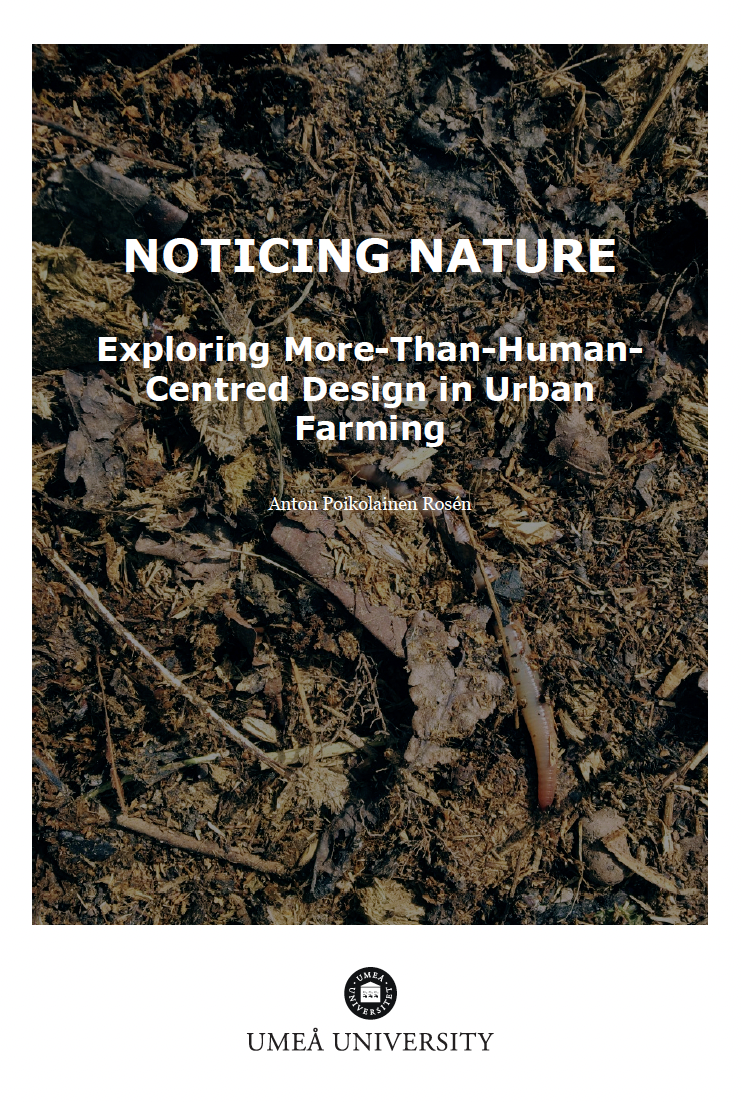PhD Thesis: Noticing Nature
My Phd Thesis “Noticing Nature: Exploring More-Than-Human-Centred Design in Urban Farming” Is available here.

This thesis articulates, theorises and furthers the concept of “more-than-human-centred design” by studying the use and design of technology for noticing nature and caring for nature. The emerging field of more-than-human-centred design focuses on the mutual interdependence between humans and non-humans (e.g. organisms such as animals, plants and microbes, as well as autonomous technologies). It is a step away from seeing other organisms as inferior to humans or valuable only as resources. This implies that design research frameworks and methods need to be remade. How can we design for and with other organisms? What needs to be accommodated in a paradigm that allows for more-than-human-centred design? What are concrete design examples and implications of this kind of thinking? In short, there is a need to investigate what it means to design for more-than-human worlds.
This is investigated in the thesis through a series of studies and design experiments, including ethnography (participant observation, interviews, surveys and workshops), design projects (design ideation, development and analysis of prototypes) and design critique of existing artefacts. Most of these studies are conducted within a four-year ethnography of a regenerative urban farming community in Stockholm, Sweden.
The thesis draws on posthuman theory. This theory examines the implications of expanding concern and subjectivities beyond the human, and aims to understand the human subject and its relationship to the world in a non-anthropocentric light. Phenomenological analysis is further applied to articulate and understand the human-technology-nature relationship as it is experienced first-person.
The thesis contributes an articulation of a more-than-human-centred design programme. Here, two design implications are suggested, “expanding the sensible” and “design for sensory-rich experiences”. Methods for noticing the more-than-human world are suggested, along with principles for designing for and with other organisms, such as finding leverage points in systems and providing a scaffold for naturally occurring processes. The meaning of “design”, “the designer” and “the user” is discussed. Lastly, a manifesto for more-than-human-centred design is proposed.